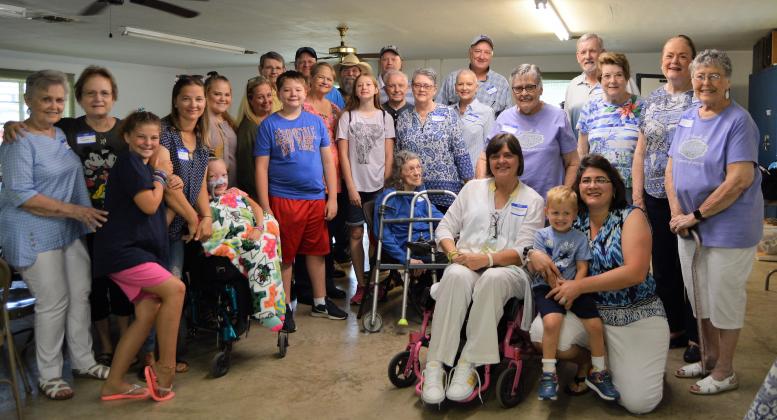John S. Black family holds 112th reunion
The descendants of John S. Black, one of Grimes County’s earliest settlers, gathered at the Roans Prairie Community Center Sunday, July 28, for the 112th Black Family Reunion. Roans Prairie is significant because that is the area of the county to which Black received his “league of land,” roughly 4,000 acres, in an 1831 land grant. For many years it was known as Black’s Prairie and his descendants would later donate the land on which the community center now sits, to the Roans Prairie community.
More than two dozen men, women and children, spanning four generations celebrated the occasion enjoying barbecue and perusing treasured faded photographs and the Black Family History book, meticulously complied in 1942 by earlier Black descendants, Mary Black Darby and Hermon M. Black.
According to Ann Anthony, the reunion’s organizer, the family has met in a number of different places over the years but among the most memorable were those held at the roadside park on SH 90 north of Anderson close to the former home of Black and his wife Mary, and where they are buried.
While attendance numbers have declined over the last few years, the significance of Black’s contribution to Grimes County and Texas history, and the importance of family reunions is not lost on those who do. Descendant Tiajuana Moss from Buna thinks reunions are very important because they focus on family.
She said, “I think today’s society is broke. Technology as it is, has taken away from family. I think it’s important to know where you came from. I think it’s important to know your history, and if it’s good, great! If it’s bad, you don’t have to relive it, you can overcome it.”
Black appeared born to be a patriot. He descended from participants of the American Revolution and he took up the cause of Texas by fighting in the Texas Revolution at the Siege of Bexar (San Antonio) and at San Jacinto.
Anthony likes to remind people that had Black not returned home from San Antonio during the two months interim before the Siege of the Alamo, “none of us would be here.”
In his time Black served the Republic of Texas and President Sam Houston as an Indian commissioner, and later operated “Black’s Run,” an ox-wagon freight company serving steamers on the Trinity and Brazos Rivers.
According to local author Betty Dunn in her Examiner column, Grains from the Sandbar, “It would take as many as six yokes of oxen to pull the heavily laden wagons that cut deep ruts in the soil leaving high centers. Eventually, it became the Black Stagecoach route from Huntsville to Austin,” and later the Sam Houston Trail because of his frequent trips between Huntsville and Independence.
Black was also a Mason and is listed on a memorial monument in Brazoria that sits under the historic Masonic Oak, the site of the first Masonic Lodge in Texas.







